Gene therapy is on the brink of revolutionizing biomedical research and therapeutic sciences, driven by the promise of preventing disease progression and offering long-term cures. While the number of approved products in clinics remains limited, the field of genetic medicine is experiencing a surge in clinical trials, showcasing its immense potential.
One of the critical aspects of gene therapy is the purification of recombinant adeno-associated viruses (rAAV). These viral vectors are essential for delivering therapeutic genes to target cells. However, the purification process presents several challenges that must be addressed to ensure the safety and efficacy of the final product.
In this article, we delve into the technologies and challenges currently faced in the purification of recombinant adeno-associated viruses (rAAV).
Components of viral vector system
Before we delve into purification strategies, it's crucial to understand the components of the viral vector system. There are three main components that form part of the vector system:
- 1. The protein capsid: This defines cell tropism, antigen recognition and envelopes the genetic payload.
- 2. The regulatory cassette: This controls expression of the transgene as an episomal or chromosomal integrant.
- 3. The transgene of interest: The therapeutic gene that is delivered to the target cells.
Exploring the potential of AAVs in Gene Therapy
One of the most exciting developments in the use of AAV for gene therapy is the ability to manipulate the viral DNA to produce recombinant AAV (rAAV). The customization of the viral payload involves replacing the rep and cap gene with a tailored exogenous gene cassette that holds a therapeutic transgene. The tailored approach allows for more precise delivery of gene therapy to specific tissues, thereby minimizing the risk of unintended off-target effects on other organs associated with traditional AAV vectors.
Purification techniques and challenges
Manufacturing of rAAV is a multifaceted process that encompasses three critical stages that are divided into upstream and downstream processes:
rAAV production
Purification
Quality control
Each of these stages presents unique challenges that must be meticulously managed to guarantee that the final product is safe and effective.

Capsid isolation
The purification of AAVs is a pivotal step that can significantly impact downstream applications. The lysate generated from upstream processes is often crude and laden with both process- and product-related impurities. Purification and polishing ensure the safety and efficacy of the therapeutic product by removing impurities such host cell DNA, RNA and proteins while enriching functional AAV vectors. Here we explore some widely utilized purification techniques integral to this process:
- 1. Density Gradient Ultracentrifugation: CsCl or iodixanol density gradient ultracentrifugation is a common technique used to remove non-inert impurities, such as empty capsids, using centrifugal force. However, this method is time consuming, labour intensive and not cost effective. Additionally, prolonged exposure to CsCl can reduce transduction efficiency of rAAV. Concerns about cross-reactivity in patients with iodine allergies make iodixanol unsuitable for clinical use.
- 2. Ultrafiltration: Ultra flow filtration, tangential flow filtration and buffer exchange dialysis filtration are a few ultrafiltration techniques. Despite their simplicity, these purification processes are non-automated and time-consuming.
- 3. Chromatography: Affinity and ion exchange chromatography are widely employed purification techniques. These methods leverage specific interactions between the viral vector and chromatographic media to purify the rAAV.
Affinity purification shortens quality control workflows
Affinity binding has proven to be highly effective in eliminating impurities such as plasmid DNA and host cell RNA/DNA. The purified vector can be polished using ion-exchange chromatography to remove empty capsids.
A game-changer: CaptureSelect™ AAVX PhyTip® Columns
CaptureSelect™ AAVX PhyTip® columns from Biotage, are unique and useful solutions for small-scale, high-throughput automated AAV purification. These innovative tip-based columns are designed to streamline the purification process for sample volumes of up to 1ml. The convenient tip-based format allows parallel processing of multiple samples on robotic liquid handling systems, making it easier to achieve standardization in purification processes. This feature is particularly beneficial for high-throughput environments where efficiency and consistency are paramount.

Filled with POROS Capture Select™ AAVX affinity resin, these columns employ dual flow chromatography to capture, purify, and enrich AAV particles. Affinity capture, along with dual flow technology, allows purification from smaller sample volume and dilute samples. Moreover, elution in smaller volumes enhances the concentration of the eluant and improves the overall yield of the AAV samples.

AAVX PhyTip® columns successfully addresses common challenges linked with traditional purification methods. By utilizing affinity-based purification, AAVX PhyTip® columns mitigate concerns of decreased PCR sensitivity and false negative results often associated with magnetic bead-based purification. But the benefits don’t stop there. The tip-based purification process, which leverages an automated platform, significantly reduces risks of sample cross-contamination and manual errors that can occur with plate-based purification techniques. This ensures the integrity of your samples, making the purification process more reliable and efficient.
In summary, CaptureSelect™ AAVX PhyTip® columns from Biotage offer a swift and effective solution for AAV purification. These columns harness the power of dual flow chromatography and affinity capture to enhance both purity and yield. But that's not all—they also streamline workflows, reduce errors, and elevate the reliability of results.
As the demand for AAV-based therapies continues to grow, adopting innovative solutions like CaptureSelect™ AAVX PhyTip® columns will be essential for paving the way for advancements in research and development in this exciting field.

